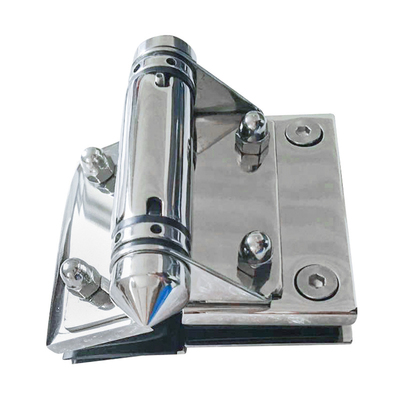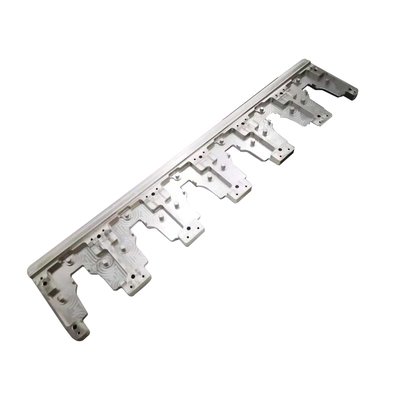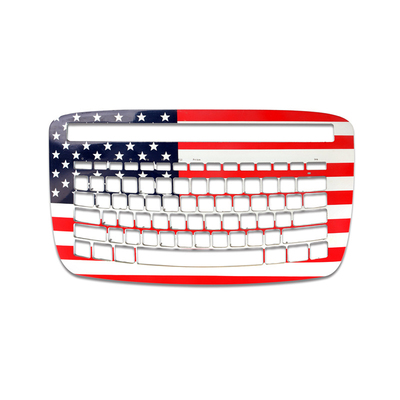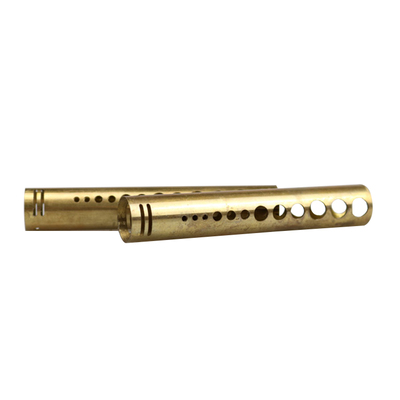Research on Roots Blower Blade CNC Machining System Based on Programmable Logic Controller (PLC)
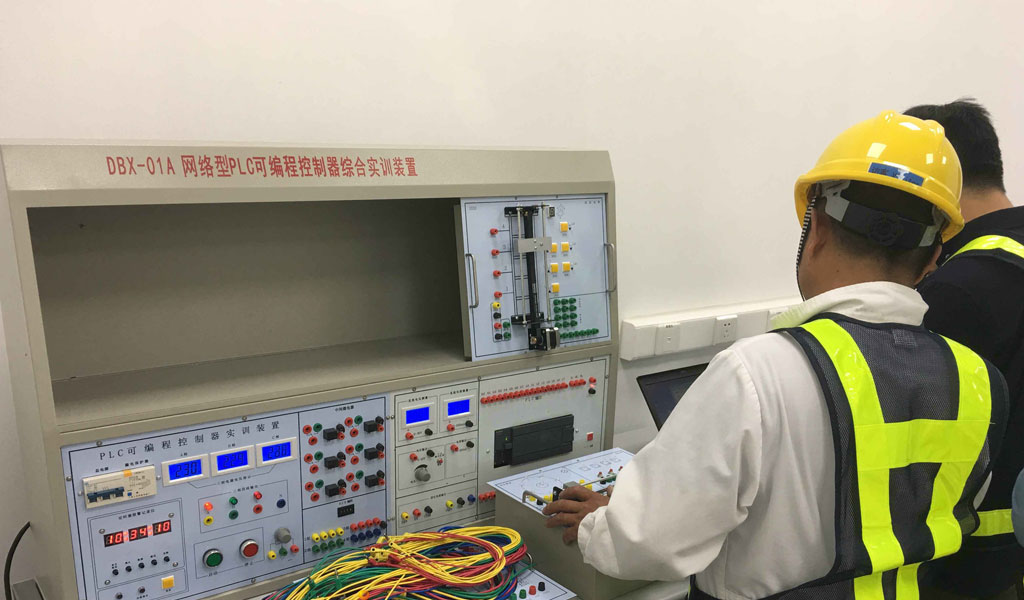
The Roots blower, a positive displacement rotary lobe pump, has been a cornerstone of industrial applications since its invention in the 19th century by the Roots brothers. Its ability to deliver consistent, high-volume airflow at relatively low pressures makes it indispensable in industries such as wastewater treatment, pneumatic conveying, and chemical processing. Central to the performance of a Roots blower is the precision of its rotor blades, which must be manufactured with exacting tolerances to ensure efficiency, durability, and minimal energy loss. The advent of Computer Numerical Control (CNC) machining systems, coupled with Programmable Logic Controllers (PLCs), has revolutionized the production of these critical components, enabling unprecedented levels of precision, automation, and flexibility.
This article explores the research and development of CNC machining systems for Roots blower blades, with a particular focus on the integration of PLCs to enhance control, automation, and process optimization. It delves into the historical evolution of Roots blowers, the principles of CNC machining, the role of PLCs in industrial automation, and the specific challenges and innovations associated with machining Roots blower blades. The discussion is grounded in a scientific approach, incorporating detailed analyses, comparisons, and technical insights to provide a comprehensive understanding of this interdisciplinary field. Tables are included to facilitate comparisons of technologies, performance metrics, and system configurations.
Historical Context of Roots Blowers
The Roots blower, patented in 1860 by Philander and Francis Roots, was initially designed to ventilate mine shafts. Its simple yet robust design, consisting of two counter-rotating lobed rotors within a casing, allowed for reliable air displacement without internal compression. Over the decades, the Roots blower found applications in diverse sectors, from powering early internal combustion engines to modern industrial processes. The efficiency of a Roots blower depends heavily on the geometry and surface finish of its rotors, which must minimize leakage between lobes and the casing while maintaining mechanical integrity under high rotational speeds.
Early manufacturing methods for Roots blower blades relied on manual machining and casting, which were labor-intensive and prone to inconsistencies. The introduction of numerical control (NC) in the 1950s, followed by CNC in the 1970s, marked a significant leap forward. These technologies enabled precise control over tool paths, reducing human error and improving repeatability. However, the complexity of Roots blower blade geometries—often involving non-circular lobe profiles and tight tolerances—posed unique challenges that required advanced control systems. The integration of PLCs into CNC systems in the 1980s further enhanced automation, allowing for real-time monitoring, fault detection, and seamless coordination of auxiliary functions.
Fundamentals of CNC Machining
CNC machining is a subtractive manufacturing process that uses computer-controlled machine tools to remove material from a workpiece, shaping it into a desired form. The process begins with a digital model, typically created using Computer-Aided Design (CAD) software, which is converted into machine-readable instructions via Computer-Aided Manufacturing (CAM) software. These instructions, often in the form of G-code, dictate the movements of the machine’s axes, tool selection, spindle speed, and feed rate.
Components of a CNC System
A typical CNC system comprises several key components, each contributing to the precision and efficiency of the machining process:
-
CNC Kernel: The core software that interprets G-code, plans tool paths, and generates setpoints for axis movements. It ensures smooth and accurate motion control, accounting for kinematic constraints and machining parameters.
-
Programmable Logic Controller (PLC): An industrial computer that handles logical operations, such as activating coolant systems, controlling tool changers, and monitoring safety interlocks. PLCs are programmed using languages like Ladder Logic, adhering to standards such as IEC 61131-3.
-
Machine Interface: Facilitates communication between the CNC system and external applications, including the user interface (UI) and production management systems.
-
Fieldbus Interface: Connects the CNC system to peripheral devices, such as drives, motors, and sensors, ensuring deterministic data exchange.
-
Drives and Motors: Execute the physical movements dictated by the CNC kernel, with feedback controllers for position, velocity, and torque.
-
Graphical User Interface (GUI): Allows operators to configure, monitor, and control the CNC system, often displaying real-time data and diagnostic information.
CNC Machining for Roots Blower Blades
Roots blower blades, or lobes, are characterized by complex, non-circular geometries that require multi-axis machining. Typically, a 3-axis or 5-axis CNC milling machine is used, depending on the blade’s design complexity. The machining process involves several stages:
-
Roughing: Removes bulk material from the workpiece, using high-feed-rate tools to achieve a near-net shape.
-
Semi-Finishing: Refines the blade’s geometry, improving surface quality and dimensional accuracy.
-
Finishing: Achieves the final surface finish and tolerances, often using high-speed spindles and fine tools.
-
Inspection: Verifies dimensional accuracy and surface quality, using coordinate measuring machines (CMMs) or laser scanners.
The precision required for Roots blower blades—often within ±0.01 mm—demands robust control systems to minimize errors caused by tool wear, thermal expansion, or vibrations. PLCs play a critical role in coordinating these processes, ensuring seamless transitions between machining stages and real-time adjustments based on sensor feedback.
Role of Programmable Logic Controllers in CNC Systems
PLCs are ruggedized industrial computers designed to automate electromechanical processes in harsh environments. Introduced in the late 1960s as a replacement for hard-wired relay systems, PLCs have evolved into sophisticated control units capable of handling complex logic, motion control, and data processing. In CNC systems, PLCs complement the CNC kernel by managing auxiliary functions and ensuring system reliability.
PLC Architecture and Programming
A PLC consists of a central processing unit (CPU), memory, input/output (I/O) modules, and communication interfaces. The CPU executes a user-defined program, stored in non-volatile memory, which processes inputs from sensors and generates outputs to actuators. PLC programming adheres to the IEC 61131-3 standard, which defines five languages:
-
Ladder Diagram (LD): Mimics relay logic, widely used for its visual simplicity.
-
Function Block Diagram (FBD): Represents processes as interconnected blocks, ideal for modular programming.
-
Structured Text (ST): A high-level, text-based language similar to Pascal, suitable for complex algorithms.
-
Instruction List (IL): A low-level, assembly-like language for compact programs.
-
Sequential Function Chart (SFC): Organizes processes into sequential steps, useful for state-based control.
In CNC machining, Ladder Logic is the most common due to its intuitive representation of electrical circuits, making it accessible to engineers familiar with traditional control systems.
PLC Functions in CNC Machining
In a CNC system for Roots blower blade machining, the PLC performs several critical functions:
-
Auxiliary Control: Manages non-motion tasks, such as coolant activation, tool changes, and workpiece clamping. For example, the PLC may activate a coolant pump when the spindle starts, based on a predefined logic sequence.
-
Safety Monitoring: Detects anomalies, such as overcurrent in motors or excessive tool wear, and triggers emergency stops or alarms. Safety PLCs incorporate redundant circuits to ensure fail-safe operation.
-
Sensor Integration: Processes signals from encoders, proximity switches, and temperature sensors, providing real-time feedback to the CNC kernel.
-
Interfacing with HMI: Facilitates operator interaction through a Human-Machine Interface (HMI), displaying system status, error messages, and machining parameters.
-
Data Logging: Records operational data, such as cycle times and error logs, for performance analysis and predictive maintenance.
The CNC-PLC interface, often implemented as shared memory, enables high-speed data exchange, ensuring tight coordination between motion control and auxiliary functions. This integration is particularly important for Roots blower blade machining, where precise timing is required to synchronize tool movements with coolant flow or tool changes.
Challenges in Roots Blower Blade Machining
Machining Roots blower blades presents unique challenges due to their complex geometry, material properties, and stringent performance requirements. These challenges necessitate advanced CNC systems with robust PLC integration.
Geometric Complexity
Roots blower blades typically feature lobed profiles, such as involute or cycloidal curves, designed to minimize air leakage and optimize volumetric efficiency. These non-circular shapes require multi-axis machining, often involving simultaneous control of X, Y, Z, and rotational axes (A and B). The CNC system must generate smooth tool paths to avoid surface irregularities, which can compromise blower performance. PLCs assist by coordinating auxiliary functions, such as tool orientation adjustments, to maintain machining accuracy.
Material Properties
Roots blower blades are commonly made from materials like cast iron, stainless steel, or aluminum alloys, chosen for their strength, corrosion resistance, and machinability. However, these materials pose challenges:
-
Cast Iron: Prone to brittleness, requiring careful control of cutting forces to prevent cracking.
-
Stainless Steel: Exhibits high toughness, leading to tool wear and heat generation.
-
Aluminum Alloys: Susceptible to deformation under excessive cutting forces, necessitating precise feed rate control.
PLCs monitor cutting parameters, such as spindle speed and feed rate, and adjust them in real-time based on material feedback, ensuring optimal machining conditions.
Tolerances and Surface Finish
The efficiency of a Roots blower depends on minimal clearance between the rotors and the casing, often requiring tolerances of ±0.01 mm. Surface finish is equally critical, as roughness can increase friction and reduce airflow efficiency. Achieving these specifications requires high-precision tools, stable machining conditions, and rigorous quality control. PLCs contribute by monitoring tool wear and triggering tool changes when predefined thresholds are reached, ensuring consistent surface quality.
Thermal and Vibrational Effects
High-speed machining generates heat and vibrations, which can cause thermal expansion or chatter, leading to dimensional inaccuracies. PLCs integrate with thermal sensors and vibration monitors to detect anomalies and adjust machining parameters, such as reducing feed rates or activating coolant systems, to mitigate these effects.
Innovations in PLC-Based CNC Systems for Roots Blower Blades
Recent advancements in PLC-based CNC systems have addressed the challenges of Roots blower blade machining, improving precision, efficiency, and automation. These innovations span hardware, software, and system integration.
Advanced PLC Hardware
Modern PLCs offer enhanced processing power, larger memory, and modular I/O configurations, enabling complex control tasks. For example, the Siemens S7-1500 PLC, commonly used in CNC systems, supports high-speed communication protocols like PROFINET, ensuring deterministic data exchange with the CNC kernel. Modular PLCs allow manufacturers to customize I/O modules for specific sensors and actuators, such as pressure sensors for coolant systems or encoders for rotor positioning.
Real-Time Control and Feedback
Real-time control is critical for Roots blower blade machining, where millisecond delays can lead to errors. Advanced PLCs incorporate real-time operating systems (RTOS) that prioritize critical tasks, such as safety interlocks and sensor processing. Feedback loops, implemented through PLCs, use data from encoders and laser scanners to adjust tool paths dynamically, compensating for tool wear or material variations.
Integration with Industry 4.0
The rise of Industry 4.0 has transformed CNC machining by integrating PLCs with Industrial Internet of Things (IIoT) platforms. In Roots blower blade production, PLCs collect data on machining parameters, tool life, and system performance, which is transmitted to cloud-based analytics platforms. This data enables predictive maintenance, reducing downtime by anticipating tool failures or system faults. For example, a PLC may detect a gradual increase in spindle torque, indicating tool wear, and schedule a tool change before quality is compromised.
Adaptive Machining
Adaptive machining, enabled by PLCs, adjusts machining parameters in real-time based on sensor feedback. For Roots blower blades, adaptive machining can optimize cutting speeds for different materials or compensate for thermal expansion. For instance, a PLC may reduce the feed rate when a temperature sensor detects excessive heat, preventing workpiece deformation. This approach improves efficiency and extends tool life, reducing production costs.
Collaborative Robotics
The integration of robotic arms with CNC systems, controlled by PLCs, has streamlined Roots blower blade production. Robots handle tasks like workpiece loading, unloading, and inspection, reducing manual labor and improving cycle times. A PLC coordinates the robot’s movements with the CNC machine, ensuring precise timing. For example, a Mitsubishi M64 CNC system with a built-in PLC can control a pneumatic manipulator for workpiece handling, as demonstrated in research on intelligent vacuum adsorption fixtures.
Comparative Analysis of CNC Systems for Roots Blower Blade Machining
To provide a scientific perspective, the following tables compare different CNC systems and PLC configurations for Roots blower blade machining, focusing on performance, cost, and application suitability.
Table 1: Comparison of CNC Systems for Roots Blower Blade Machining
|
System |
Axes |
Max Spindle Speed (RPM) |
Control Software |
PLC Integration |
Cost (USD) |
Applications |
|---|---|---|---|---|---|---|
|
Siemens Sinumerik 840D |
5 |
24,000 |
Sinumerik Operate |
S7-300/S7-1500 |
100,000+ |
High-precision, multi-axis machining |
|
Fanuc 31i |
5 |
20,000 |
Fanuc CNC |
Embedded PLC |
80,000–120,000 |
General-purpose, high-speed milling |
|
Mitsubishi M64 |
3–5 |
15,000 |
MELDAS |
Built-in PLC |
50,000–90,000 |
Cost-effective, medium complexity |
|
Beckhoff TwinCAT CNC |
5 |
30,000 |
TwinCAT CNC |
TwinCAT PLC |
70,000–110,000 |
Flexible, Industry 4.0 integration |
|
Haas VF-Series |
3–4 |
12,000 |
Haas Control |
Optional PLC |
40,000–80,000 |
Small-scale, cost-sensitive projects |
Analysis: The Siemens Sinumerik 840D is ideal for high-precision Roots blower blade machining due to its advanced 5-axis capabilities and robust PLC integration. The Fanuc 31i offers a balance of performance and cost, suitable for large-scale production. The Mitsubishi M64 is a cost-effective option for medium-complexity blades, while the Beckhoff TwinCAT CNC excels in Industry 4.0 applications. The Haas VF-Series is best for smaller manufacturers with simpler blade designs.
Table 2: Comparison of PLCs for CNC Machining
|
PLC Model |
Processor |
I/O Capacity |
Programming Languages |
Communication Protocols |
Cost (USD) |
Key Features |
|---|---|---|---|---|---|---|
|
Siemens S7-1500 |
1 GHz, multi-core |
2,048 |
LD, FBD, ST, SFC, IL |
PROFINET, EtherNet/IP |
5,000–15,000 |
High-speed, Industry 4.0 integration |
|
Allen-Bradley ControlLogix |
1.5 GHz, dual-core |
4,096 |
LD, FBD, ST, SFC |
EtherNet/IP, DeviceNet |
6,000–20,000 |
Scalable, robust safety features |
|
Mitsubishi FX5U |
400 MHz |
512 |
LD, FBD, ST |
CC-Link, Modbus |
1,500–5,000 |
Compact, cost-effective |
|
Beckhoff CX2040 |
Intel Core i7, 2.1 GHz |
1,024 |
LD, FBD, ST, SFC |
EtherCAT, OPC UA |
4,000–12,000 |
Real-time control, IIoT compatibility |
|
Omron CP1L |
200 MHz |
160 |
LD, FBD |
Modbus, Serial |
500–2,000 |
Entry-level, small-scale applications |
Analysis: The Siemens S7-1500 and Allen-Bradley ControlLogix are suited for complex CNC systems with high I/O requirements and Industry 4.0 integration. The Mitsubishi FX5U offers a cost-effective solution for smaller systems, while the Beckhoff CX2040 excels in real-time control and IIoT applications. The Omron CP1L is ideal for entry-level or small-scale Roots blower blade machining.
Table 3: Performance Metrics for Roots Blower Blade Machining
|
Metric |
Siemens Sinumerik 840D |
Fanuc 31i |
Mitsubishi M64 |
Beckhoff TwinCAT CNC |
Haas VF-Series |
|---|---|---|---|---|---|
|
Tolerance (mm) |
±0.005 |
±0.01 |
±0.015 |
±0.008 |
±0.02 |
|
Surface Roughness (Ra, µm) |
0.4 |
0.6 |
0.8 |
0.5 |
1.0 |
|
Cycle Time (min) |
45 |
50 |
60 |
48 |
70 |
|
Tool Life (hrs) |
100 |
90 |
80 |
95 |
70 |
|
Downtime (% of total time) |
2% |
3% |
5% |
2.5% |
6% |
Analysis: The Siemens Sinumerik 840D achieves the tightest tolerances and best surface finish, with minimal downtime, making it ideal for high-end Roots blower blades. The Beckhoff TwinCAT CNC offers comparable performance with better IIoT integration. The Fanuc 31i and Mitsubishi M64 provide good performance for mid-range applications, while the Haas VF-Series is less precise but more affordable.
Case Studies in PLC-Based CNC Machining of Roots Blower Blades
Case Study 1: Siemens Sinumerik 840D with S7-1500 PLC
A leading Roots blower manufacturer implemented a Siemens Sinumerik 840D CNC system with an S7-1500 PLC to produce stainless steel blower blades for wastewater treatment plants. The system used a 5-axis milling machine to achieve tolerances of ±0.005 mm and a surface roughness of 0.4 µm. The PLC managed coolant flow, tool changes, and safety interlocks, while PROFINET ensured high-speed communication. Real-time adaptive machining, driven by PLC feedback, reduced cycle times by 15% and extended tool life by 20%. The integration of IIoT analytics allowed predictive maintenance, reducing downtime by 30%.
Case Study 2: Mitsubishi M64 with Built-in PLC
A mid-sized manufacturer adopted a Mitsubishi M64 CNC system with a built-in PLC to machine aluminum alloy Roots blower blades for pneumatic conveying systems. The 3-axis machine, controlled by MELDAS software, achieved tolerances of ±0.015 mm. The PLC coordinated a pneumatic manipulator for workpiece loading, reducing manual labor by 50%. While the system was cost-effective, its limited I/O capacity constrained scalability for complex blade designs.
Case Study 3: Beckhoff TwinCAT CNC with CX2040 PLC
A research institute developed a prototype CNC system using Beckhoff TwinCAT CNC and a CX2040 PLC to machine cast iron Roots blower blades. The system integrated a 7-axis milling robot, controlled via TwinCAT Robotics uniVAL PLC, achieving tolerances of ±0.008 mm. The PLC’s EtherCAT interface enabled real-time control of robot kinematics, while IIoT connectivity facilitated remote monitoring. The system’s flexibility allowed rapid reconfiguration for different blade geometries, demonstrating its potential for small-batch production.
Future Trends in PLC-Based CNC Machining
The future of PLC-based CNC systems for Roots blower blade machining is shaped by emerging technologies and industry trends. Key developments include:
Artificial Intelligence and Machine Learning
AI and ML algorithms, integrated with PLCs, can optimize machining parameters by analyzing historical data and real-time sensor inputs. For example, an AI-driven PLC could predict optimal cutting speeds for different blade materials, reducing cycle times and improving surface quality. ML models can also detect anomalies, such as tool wear or vibrations, enhancing predictive maintenance.
Digital Twins
Digital twins—virtual replicas of CNC systems—enable real-time simulation and optimization. A digital twin of a Roots blower blade machining system, running on a PLC, can predict machining outcomes, identify potential errors, and optimize tool paths before physical production begins. This technology reduces waste and improves efficiency.
Advanced Materials and Coatings
The use of advanced materials, such as titanium alloys or ceramic composites, for Roots blower blades requires CNC systems with enhanced control capabilities. PLCs will need to adapt to new machining challenges, such as higher cutting forces and thermal loads, by integrating advanced sensors and feedback loops.
Sustainability and Energy Efficiency
Sustainability is a growing priority in manufacturing. PLC-based CNC systems can optimize energy consumption by adjusting spindle speeds, coolant usage, and idle times. For example, a PLC may reduce power to auxiliary systems during non-machining phases, lowering the carbon footprint of Roots blower blade production.
Standardization and Interoperability
The adoption of standardized communication protocols, such as OPC UA, will improve interoperability between CNC systems, PLCs, and other industrial systems. This standardization facilitates seamless integration with IIoT platforms, enabling data-driven decision-making and scalable production.
Conclusion
The research and development of PLC-based CNC machining systems for Roots blower blades represent a convergence of mechanical engineering, control systems, and digital technologies. By integrating advanced PLCs with CNC kernels, manufacturers can achieve unparalleled precision, automation, and efficiency in producing complex, high-performance blower blades. The challenges of geometric complexity, material properties, and stringent tolerances are being addressed through innovations in real-time control, adaptive machining, and Industry 4.0 integration. Comparative analyses highlight the strengths and trade-offs of different CNC systems and PLC configurations, guiding manufacturers in selecting the optimal solution for their needs.
As the industry moves toward AI, digital twins, and sustainable practices, PLC-based CNC systems will continue to evolve, driving advancements in Roots blower performance and manufacturing efficiency. This article provides a comprehensive foundation for researchers, engineers, and industry professionals seeking to understand and advance this critical field, offering insights into current practices and future possibilities.
Reprint Statement: If there are no special instructions, all articles on this site are original. Please indicate the source for reprinting:https://www.cncmachiningptj.com/,thanks!
 3, 4 and 5-axis precision CNC machining services for aluminum machining, beryllium, carbon steel, magnesium, titanium machining, Inconel, platinum, superalloy, acetal, polycarbonate, fiberglass, graphite and wood. Capable of machining parts up to 98 in. turning dia. and +/-0.001 in. straightness tolerance. Processes include milling, turning, drilling, boring, threading, tapping, forming, knurling, counterboring, countersinking, reaming and laser cutting. Secondary services such as assembly, centerless grinding, heat treating, plating and welding. Prototype and low to high volume production offered with maximum 50,000 units. Suitable for fluid power, pneumatics, hydraulics and valve applications. Serves the aerospace, aircraft, military, medical and defense industries.PTJ will strategize with you to provide the most cost-effective services to help you reach your target,Welcome to Contact us ( [email protected] ) directly for your new project.
3, 4 and 5-axis precision CNC machining services for aluminum machining, beryllium, carbon steel, magnesium, titanium machining, Inconel, platinum, superalloy, acetal, polycarbonate, fiberglass, graphite and wood. Capable of machining parts up to 98 in. turning dia. and +/-0.001 in. straightness tolerance. Processes include milling, turning, drilling, boring, threading, tapping, forming, knurling, counterboring, countersinking, reaming and laser cutting. Secondary services such as assembly, centerless grinding, heat treating, plating and welding. Prototype and low to high volume production offered with maximum 50,000 units. Suitable for fluid power, pneumatics, hydraulics and valve applications. Serves the aerospace, aircraft, military, medical and defense industries.PTJ will strategize with you to provide the most cost-effective services to help you reach your target,Welcome to Contact us ( [email protected] ) directly for your new project.

- 5 Axis Machining
- Cnc Milling
- Cnc Turning
- Machining Industries
- Machining Process
- Surface Treatment
- Metal Machining
- Plastic Machining
- Powder Metallurgy Mold
- Die Casting
- Parts Gallery
- Auto Metal Parts
- Machinery Parts
- LED Heatsink
- Building Parts
- Mobile Parts
- Medical Parts
- Electronic Parts
- Tailored Machining
- Bicycle Parts
- Aluminum Machining
- Titanium Machining
- Stainless Steel Machining
- Copper Machining
- Brass Machining
- Super Alloy Machining
- Peek Machining
- UHMW Machining
- Unilate Machining
- PA6 Machining
- PPS Machining
- Teflon Machining
- Inconel Machining
- Tool Steel Machining
- More Material

